MQ Art Facts
MQ Art Facts
Impress your friends with your knowledge of art using this small MQ Art fact list
Impress your friends with your knowledge of art using this small MQ Art fact list. An at-a-glance guide of fascinating facts about works of art which are exhibited in the museums of the Museum Quarter.
RIJKSMUSEUM
Portrait of a couple as Isaac and Rebecca, known as ‘The Jewish Bride’
Rembrandt van Rijn, ca. 1665 – 1669
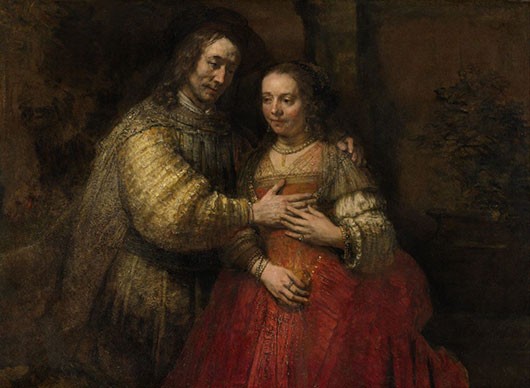
- Owes its name ‘The Jewish Bride’ to a 19th century interpretation of the painting by an Amsterdam art collector who thought the subjects to be a Jewish father and his daughter.
- The subject of the painting actually remains a mystery to this day.
- It might be a depiction of an Old Testament couple.
- Most art historians now believe it to be a portrait of contemporaries of Rembrandt who had themselves portrayed as Isaac and Rebecca from the Old Testament.
- Vincent van Gogh has said about the painting that he would give ten years of his life if he could sit and watch it for fourteen days in a row.
The Milkmaid
Johannes Vermeer, ca. 1660
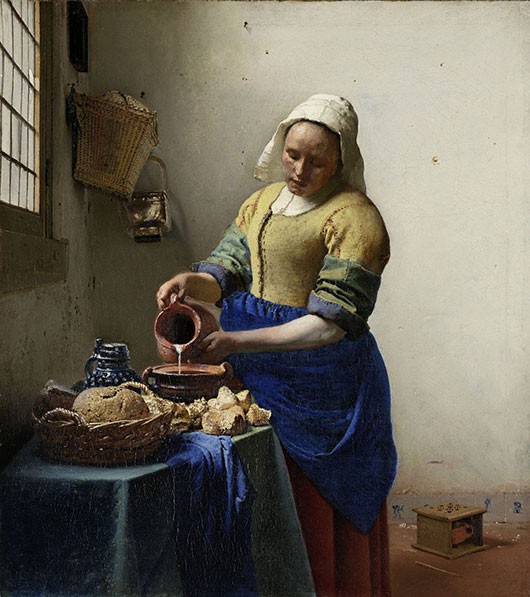
- The woman depicted is not actually a milkmaid (i.e. a woman who milks cows) but a domestic kitchen maid.
- It is believed that she is making bread pudding putting stale bread to good use.
- Maids were a favourite subject in Dutch art and often they were depicted as the subjects of desire.
- To the lower right is a Delft tile depicting Cupid with his bow.
- The foot warmer on the floor is often used to depict feminine desire in Dutch painting because they would heat not only feet but everything under a woman’s skirt.
STEDELIJK MUSEUM
Mural in the former restaurant (now library)
Karel Appel, 1956
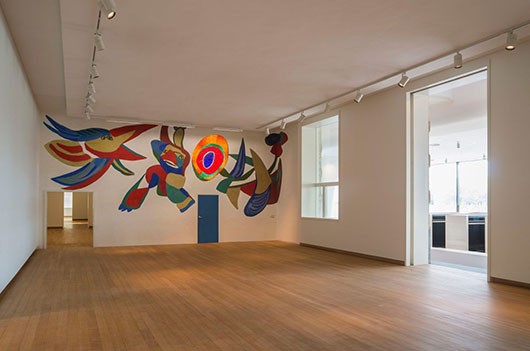
- On this mural in the former restaurant of the museum a bird, a person and a flower are ‘dancing’ across the wall.
- Because Appel’s design was a little too large for the wall, the work continues partly on the other wall.
- When the real sun shines, the painted sun in the middle of the mural emits a warm glow through the window.
- To protect the mural when the museum was recently renovated, it was covered with rice paper, which after having been removed was completely yellow caused by years of smoking in the restaurant.
Magdalena (Newman’s zip)
Marlene Dumas, 1995
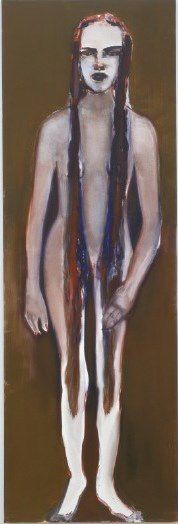
- This work is part of Dumas´ celebrated Magdalena series of paintings.
- In these works she combines images of super model Naomi Campbell with Flemish depictions of Mary Magdalene.
- Dumas uses nakedness to explore themes of love and fear and of intimacy and distance.
- Newman’s zip refers to the thin vertical lines used by abstract artist Barnett Newman in his works.
- The long hair covering the naked body refers to Newman’s zip.
VAN GOGH MUSEUM
The Bedroom
Vincent van Gogh,1888
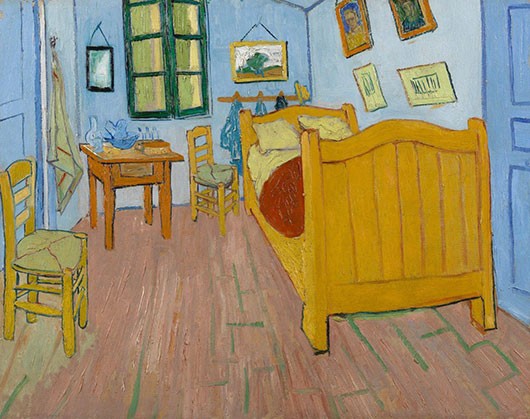
- This is the first of a series of three paintings representing Van Gogh’s bedroom in Arles (in the ‘yellow house’). The other versions are in museums in Chicago and Paris.
- The three versions are discernible from one another by the pictures (his own works) on the wall to the right.
- The colours of this painting were very important to Van Gogh. He wrote to his brother Theo that looking at this painting should ‘rest the mind, or rather, the imagination.’
- The painting has suffered from discoloration over the years; the blue of the doors and walls or example, used to be pale violet.
Selfportrait as an artist
Vincent van Gogh, December 1887 – February 1888
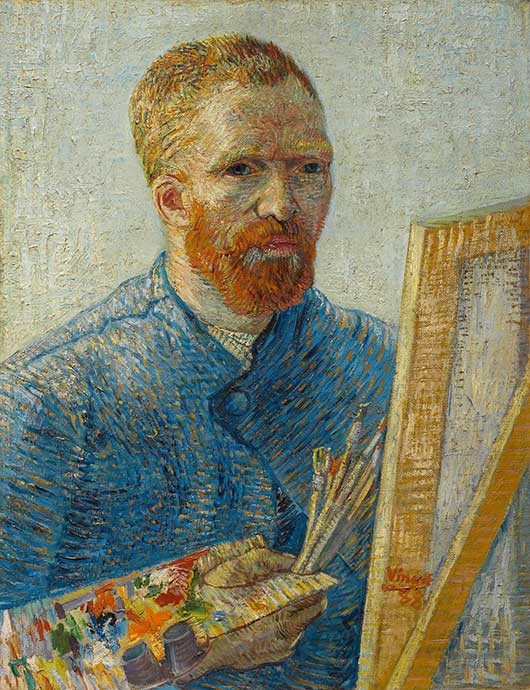
- This is the last work that Van Gogh painted in Paris, a city which had physically and mentally exhausted him.
- It is one of forty self-portraits (paintings and drawings) he made.
- He wanted to show he was a ‘modern’ painter, using a new painting style with bright, almost unblended colours.
- The colours on his palette are exactly the colours he used for this painting.
- He told his sister Wil how he had portrayed himself: ‘wrinkles in his forehead and around the mouth, stiffly wooden, a very red beard, quite unkempt and sad.